Cycles in Nature
Nutrients in nature, such as carbon, oxygen, nitrogen, phosphorous, sulfur, and water, cycle through the environment in biogeochemical cycles.
A reservoir is somewhere where large quantities of water are stored for extended periods of time. Exchange pools are the opposite, in which nutrients only remain for short periods of time before moving on to a different phase in the cycle. Living organisms can also serve as exchange pools and reservoirs for nutrients.
Nutrients spend different amounts of time in reservoirs and exchange pools and the amount of time spent in each is called the residency time.
The Law of Conservation of Matter states that matter can neither be created or destroyed, but nutrients can become unavailable when they reach a certain process, such as being transported to deep ocean sediment.
Trace elements like zinc, copper, and iron are necessary for humans in small amounts. These elements also cycle through the atmosphere.
The Water Cycle
Rain falls from the atmosphere to the Earth in a process called precipitation. The precipitation can infiltrate the surface and move through the soil, where it reaches the water table and turns into groundwater. If it is not absorbed by the soil, it continues to move along the surface as runoff.
Over time, water evaporates as evaporation and can be released in plants through transpiration (water lost through leaves).
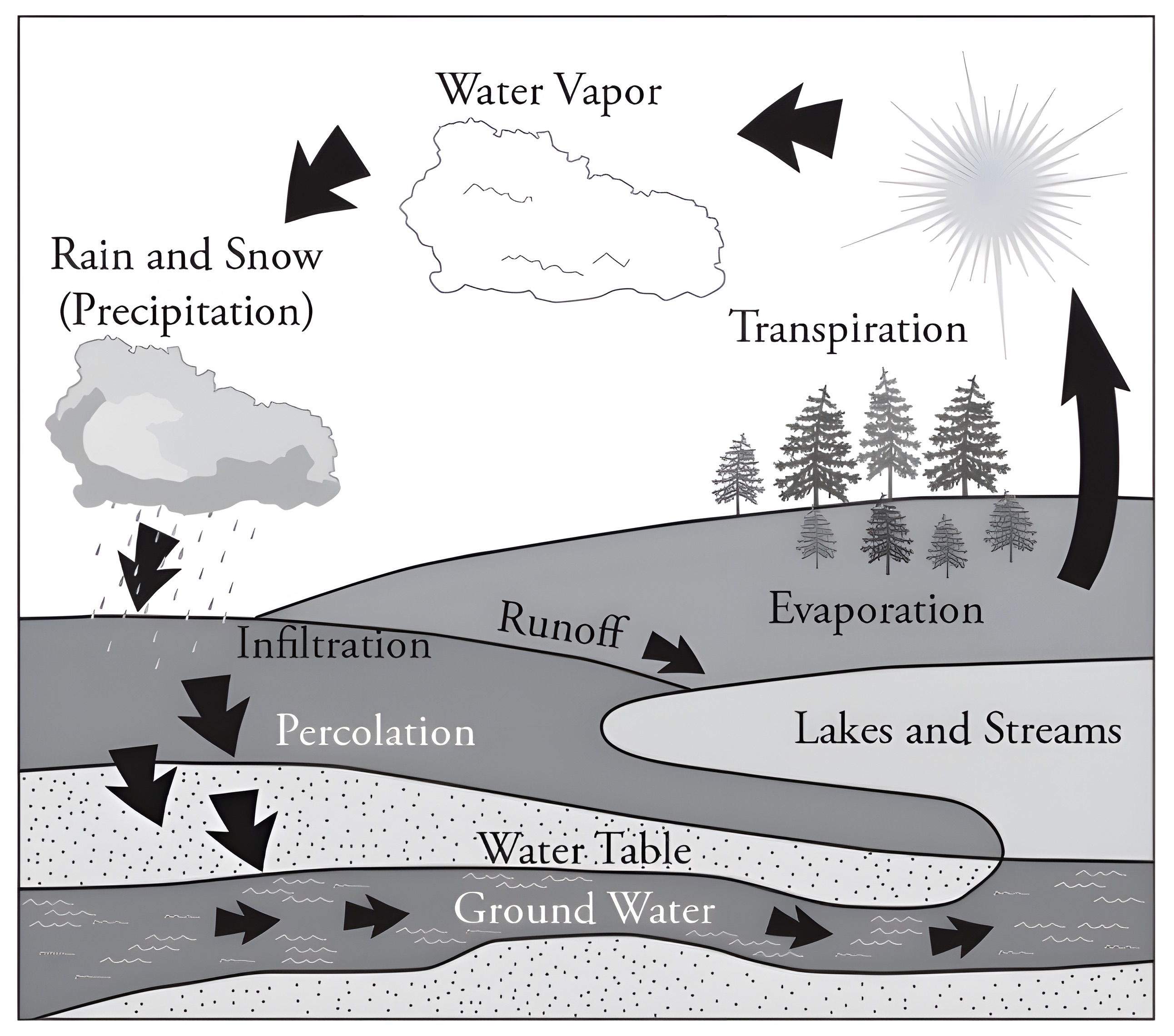
The Carbon Cycle
First, animals and plants breathe in oxygen and release carbon dioxide in a process called respiration. In photosynthesis, plants absorb carbon dioxide and release oxygen to generate energy.
Organisms have stored carbon dioxide that is released to the atmosphere once the animal dies and decomposes.
If the dead organism is buried deep into the ground, it eventually turns into oil, coal, or gas (fossil fuels). Once these fuels are combusted, carbon dioxide is released into the atmosphere.
Reservoirs of carbon dioxide:
- Oceans (carbon dioxide is dissolved in water)
- Earth’s rocks
- Fossil fuels
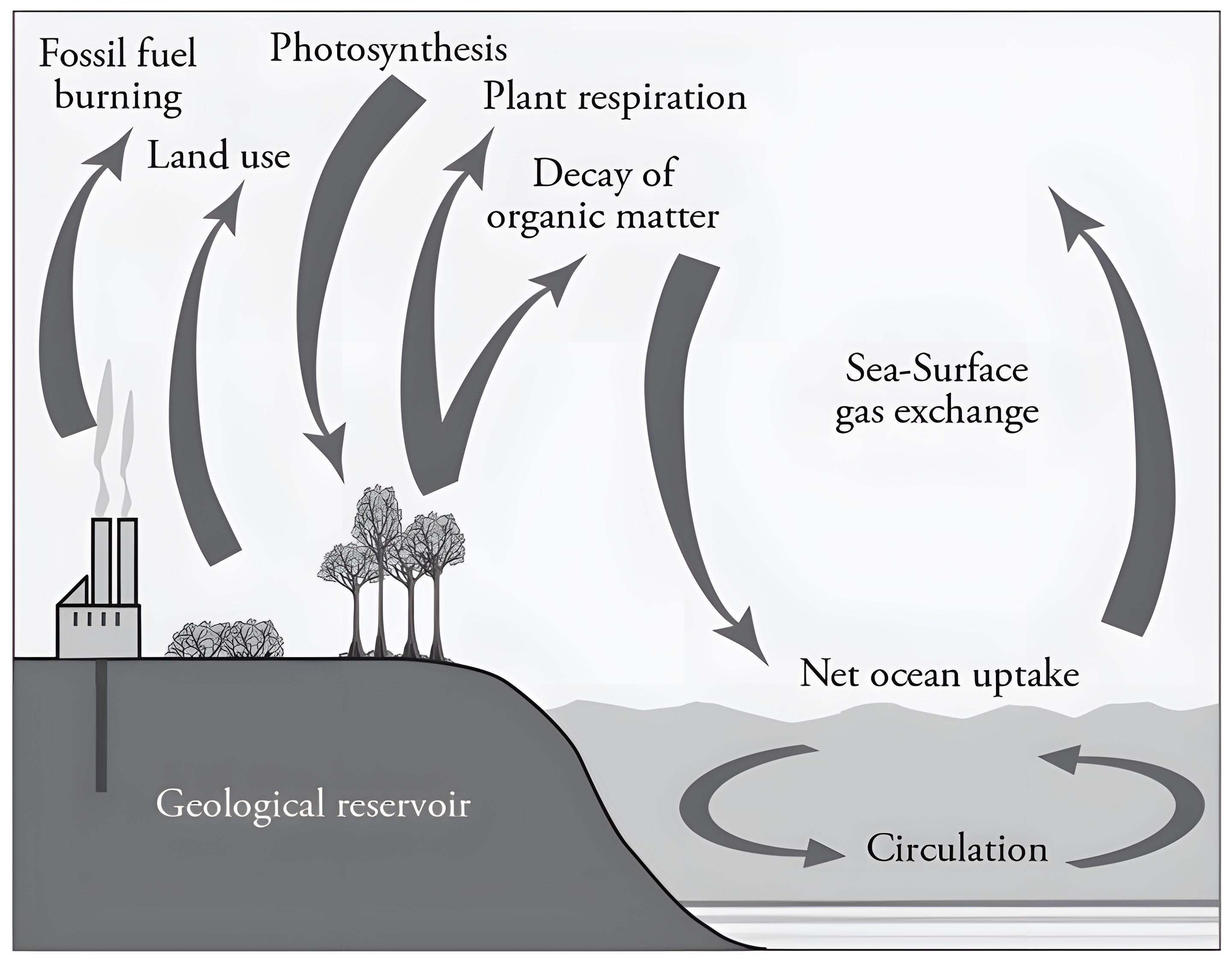
The Nitrogen Cycle
The nitrogen cycle is one of the most complicated cycles.
Nitrogen is the most prevalent gas in the atmosphere at 78%. Organisms cannot use nitrogen gas (N2) readily, so they must convert it into a usable form.
Nitrogen cycle steps:
- Nitrogen fixation — Atmospheric nitrogen \(\text{N}_2\) is turned into ammonia (\(\text{NH}_3\)) or nitrates (\(\text{NO}_3\)). Most nitrogen fixation is accomplished by bacteria, such as Rhizobium in the roots of legumes (beans and clover).
- Nitrification — Any ammonia (\(\text{NH}_3\)) or ammonium (\(\text{NH}_4^+\)) is converted into nitrites (\(\text{NO}_2\)) and then into nitrate (\(\text{NO}_3^-\)).
- Assimilation — Plants absorb the ammonia (\(\text{NH}_3\)), ammonium (\(\text{NH}_4^+\)), and nitrate (\(\text{NO}_3^-\)) through the roots. When animals consume the plants, they gain nitrogen.
- Ammonification — Bacteria decompose dead animal and plant material. Nitrogen compounds are converted to ammonia (\(\text{NH}_3\)) or ammonium (\(\text{NH}_4^+\)).
- Denitrification — Specialized bacteria, mostly anaerobic, convert ammonia back into nitrogen gas (\(\text{N}_2\)) and nitrous oxide (\(\text{N}_2\text{O}\)).
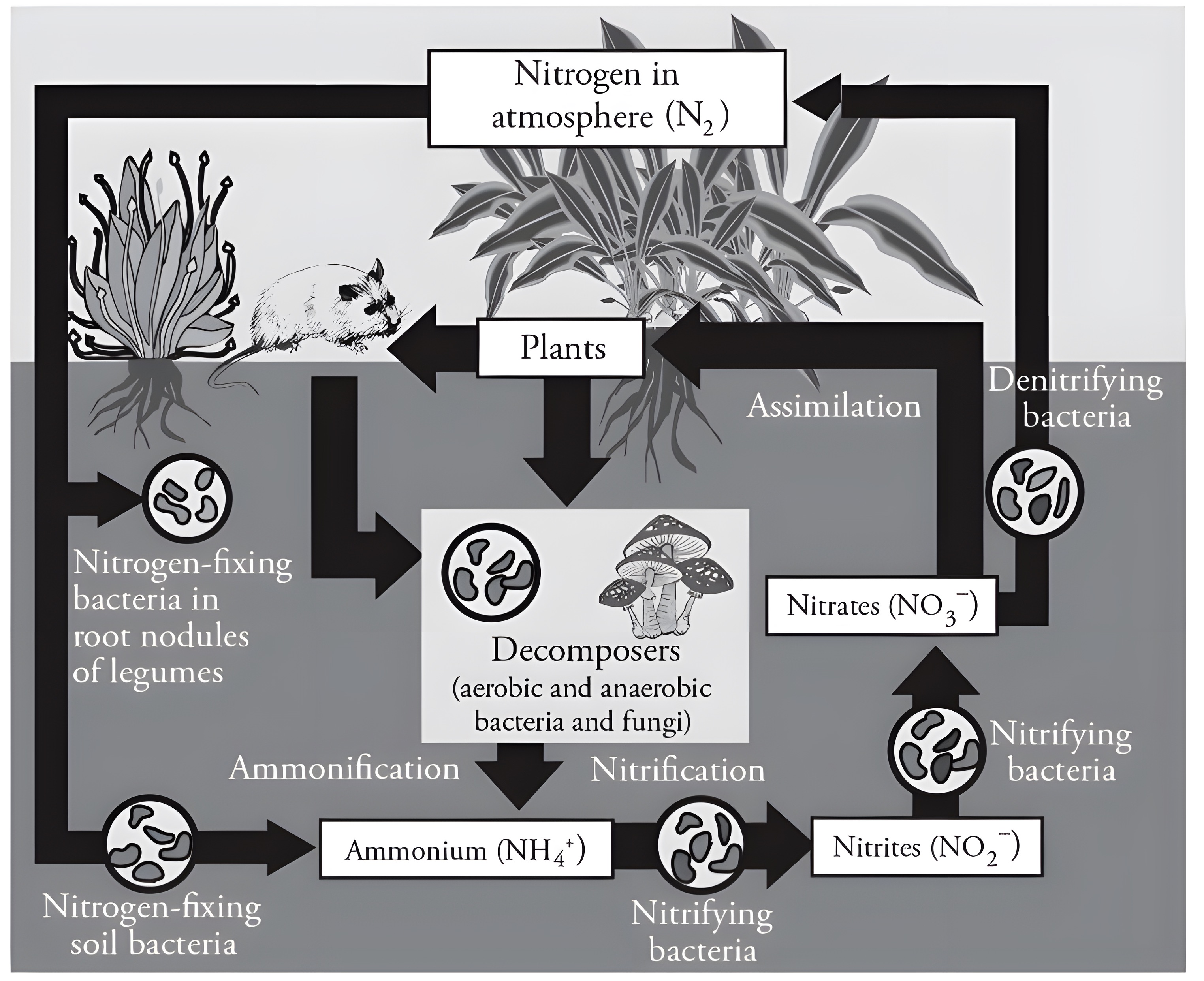
The Phosphorus Cycle
The phosphorus cycle is the simplest as phosphorus is only found in dust particles (within the atmosphere). It is essential for animals as it is used to form nucleic acids and ATP (energy). Other than dust particles, phosphorus is found in soil, rock, and sediment.
Phosphorus is usually released in the form of phosphate (\(\text{PO}_4^{3-}\)), which plants can absorb. Mycorrhizae is a symbiotic relationship between plants and fungi. The mycorrhizae fungi colonize the plant’s root system, allowing the water to absorb more nutrients and water. The plant then provides the fungi with nutrients in the form of carbohydrates synthesized during photosynthesis.
Phosphorus is a limiting factor in plant growth, so plants can be stunted if they don’t have enough phosphorus.
Phosphorus usually gets incorporated into rocks at the bottom of the ocean. After ocean mixing and upwelling, such rocks can reach the surface, allowing phosphorus to travel through the terrestrial cycle again.
When phosphorus-rich fertilizers get into the ocean through runoff, eutrophication can occur, leading to algae blooms and oxygen depletion.
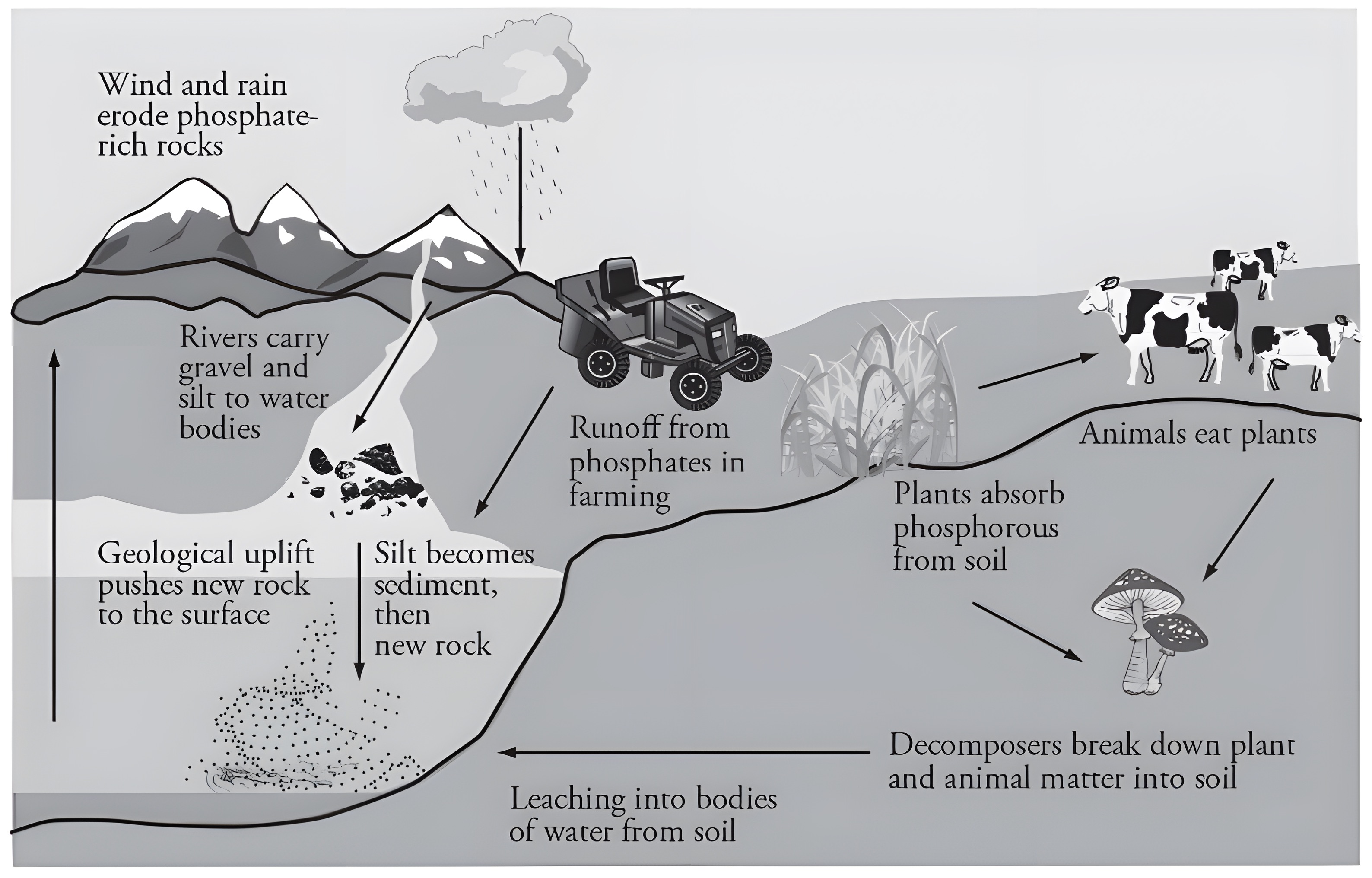
Sulfur Cycle
The sulfur cycle is essential as both plants and animals incorporate sulfur in their diets.
Most of the Earth’s sulfur is found in rocks and salts or deep in ocean sediment. Some sulfur is found in the atmosphere, but that usually only occurs during volcanic eruptions and industrial processes.
Food Chains and Food Webs
Organisms are either autotrophs, those that can produce their own food and energy, or heterotrophs, those that rely on consuming other organisms for energy. Other organisms feed on dead organisms.
Producers
Producers are plants, which convert light energy (sunlight) into carbohydrates (sugars).
The photosynthesis reaction is shown below:
$$12 \text{H}_2 \text{O} +6 \text{CO}_2 + \text{Sunlight} \rightarrow \text{C}_6\text{H}_{12}\text{O}_6+6\text{O}_2+6\text{H}_2\text{O}$$
Some autotrophs do not require oxygen to produce energy. Such organisms are anaerobic and use chemosynthesis, which is done by chemotrophs. Chemotrophs are specialized bacteria found in hydrothermal vents deep in the ocean.
The Net Primary Productivity (NPP) is the total amount of energy that plants pass on to herbivores. It is the Gross Primary Productivity (GPP), the total amount of sugar produced by the plant, minus the amount of energy the plant uses for growth and living. The unit of NPP is \(\text{kcal}/\text{m}^2/\text{y}\)).
$$ \text{NPP}=\text{GPP}-\text{Energy Used} $$
Consumers
Consumers obtain energy from eating other organisms. There are a few different types of consumers:
Primary consumers – Herbivores (only consume plants).
Secondary consumers – Consumes primary consumers.
Tertiary consumers – Consumes secondary consumers.
Detritivores – Digest nonliving organic matter like dead animals and fallen/“dead” leaves. Includes termites, earthworms, and crabs.
Decomposers – Consume dead animal and plant material. Unlike detritivores, decomposers return the nutrients to the environment.
Saprotrophs – Decomposers that break down dead organisms using enzymes and then absorb the nutrients. Includes bacteria and fungi.
An organism can occupy many levels in the food chain.
Food Chains
In a food chain, there are different trophic levels, or feeding levels. The amount of energy in higher trophic levels is lower than in lower trophic levels. Only about 10% of energy in one trophic level is transferred to the next while the rest is lost as heat—this is called the 10% Rule.
Food chains display the flow of energy through one set of organisms.
The amount of energy available in each trophic level can be shown in an energy pyramid. The unit of energy is usually kilocalories (kcal or Cal).
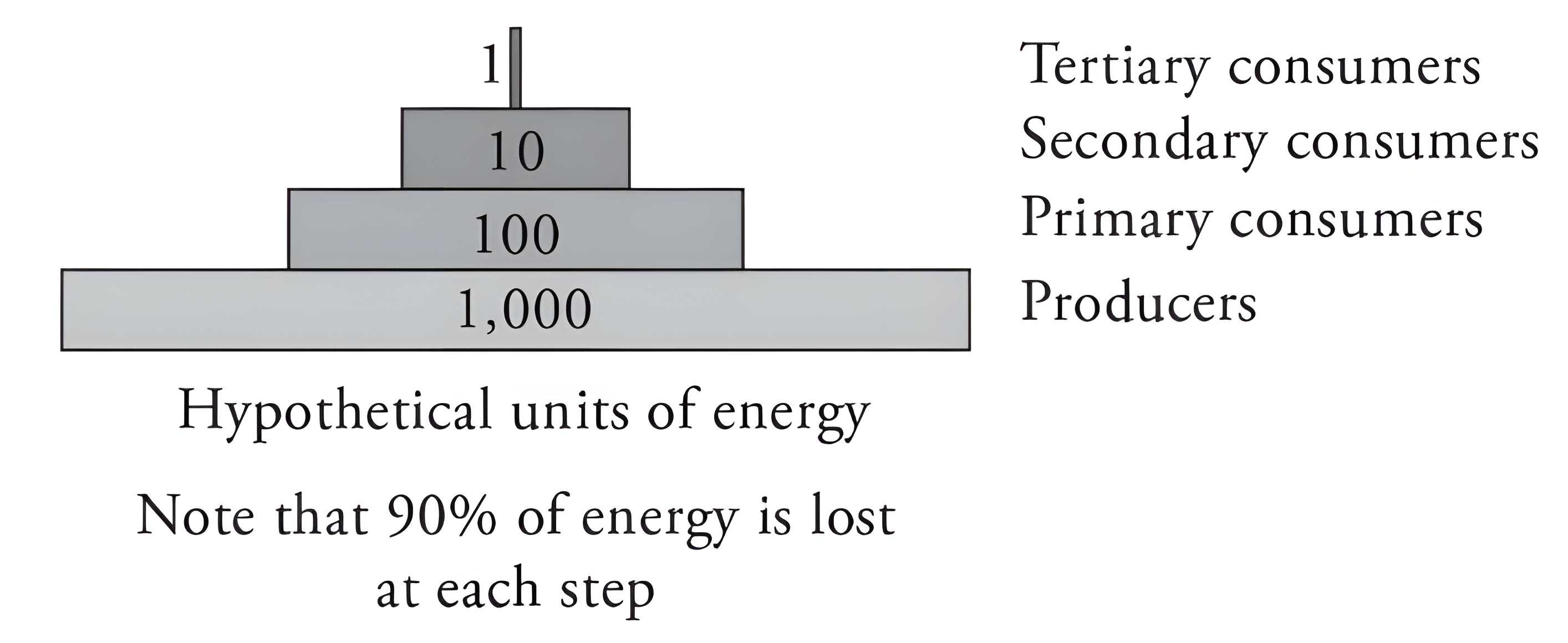
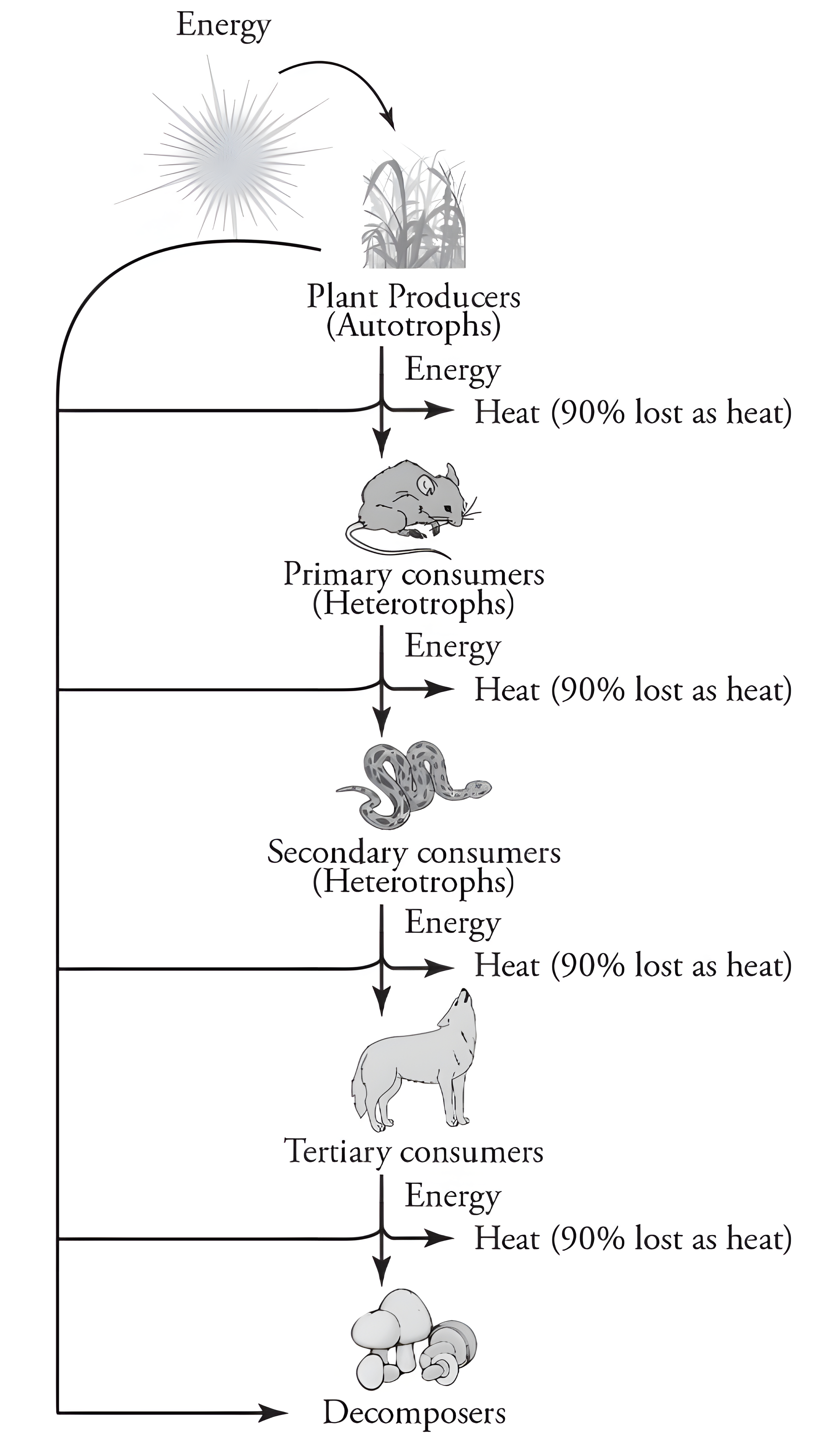
Food Webs — Tangled Food Chains
A food web is a collection of multiple food chains, which is a much more realistic visualization of an ecosystem. Food webs can include any set of organisms, whether they are terrestrial organisms or aquatic. Removing or changing an organism in a food web can have devastating consequences for the entire ecosystem.
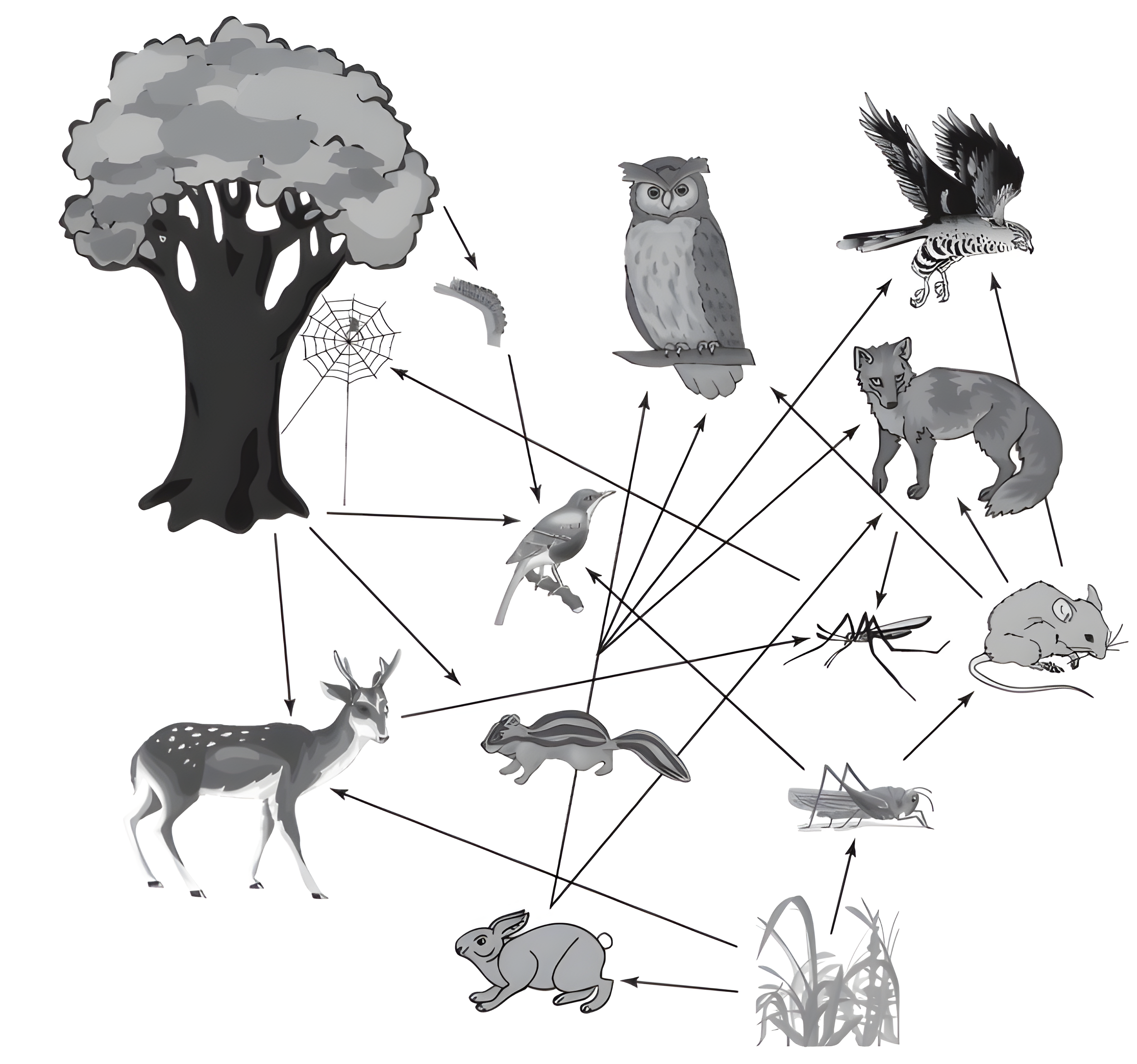
Biodiversity
Biodiversity is the number and variety of organisms in a specific ecosystem. Species richness is the number of different species found within an ecosystem. More biodiversity is good as the species’ genetic pool is larger and there is a greater chance of adaptation and survival.
The Law of Tolerance is the degree to which living organisms can tolerate changes in their environment.
The Law of the Minimum claims that living organisms will continue to live and consume resources until the supply of resources is completely exhausted.
The theory of island biogeography is that for isolated ecosystems, such as islands, the number of species found in that ecosystem is determined solely by immigration and extinction.
Ecosystem Services
Ecosystem services are the benefits humans obtain from ecosystems.
There are 4 categories of ecosystem services:
Provisioning services — Services that provide humans with food, water, medicine, energy, and raw materials.
Regulating services — Detoxifying water and air, regulation of prey populations with predators, and carbon sequestration.
Cultural services — Using nature for science and education, recreational uses of nature, spiritual uses of nature.
Supporting services — Services that make the other services possible, like primary production, nutrient recycling, soil formation, and pollination.
How Ecosystems Change
Ecosystems often contain a keystone species. This keystone species is integral to the ecosystem and its extinction could lead to the extinction of other species. Ex: Fig trees are the keystone species in tropical forests; wolves are key to Yellowstone because they control prey populations.
Indicator species are used as a measure of an ecosystem’s health. Since they are sensitive to biological changes, they serve as a warning system for dangerous changes in the ecosystem. Ex: Trout is an indicator species that tell humans whether the water is polluted.
Indigenous species are species that live naturally in the environment. Invasive species can threaten the survival of indigenous species, making it essential to control them.
Ecological Succession
The changes that take place in an ecosystem over time is ecological succession.
There are 2 types of ecological succession:
Primary succession — Succession begins in a lifeless area that did not have any species before.
Secondary succession — An existing community has been cleared (due to wildfire, hurricane, etc.), giving space for new organisms to live and grow.
In each of these successions, the first organisms that grow are called the pioneer species. Due to their high tolerance, these species can readily adapt to the changing conditions in the environment.
When the ecosystem reaches its final stage of succession, a stage in which everything is mostly constant, there is a climax community.


Habitat fragmentation is when a habitat is reduced or separated by human activity, such as roads or bridges.
Due to the edge effect, some species can only live near the boundaries of a habitat. If the boundaries are changed due to habitat fragmentation, both the edge and interior habitats may be destroyed.
